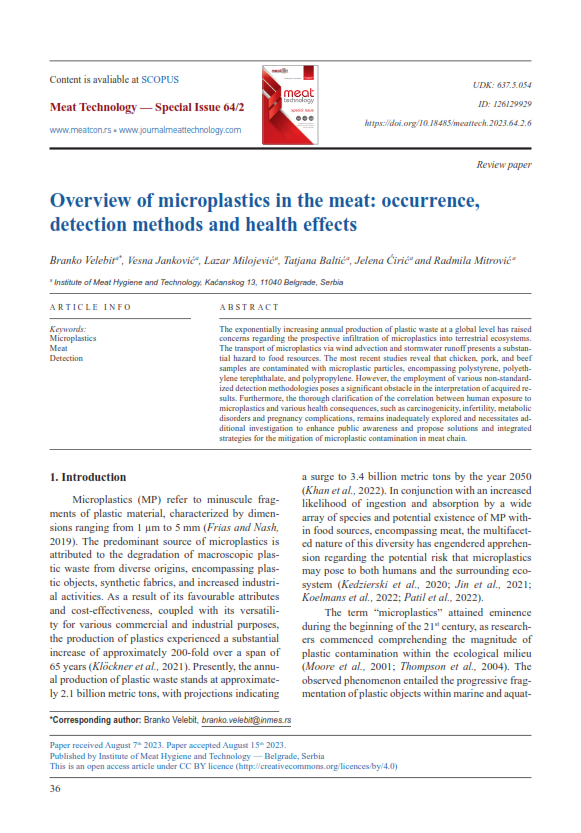Overview of microplastics in the meat: occurrence, detection methods and health effects
Abstract
The exponentially increasing annual production of plastic waste at a global level has raised concerns regarding the prospective infiltration of microplastics into terrestrial ecosystems. The transport of microplastics via wind advection and stormwater runoff presents a substantial hazard to food resources. The most recent studies reveal that chicken, pork, and beef samples are contaminated with microplastic particles, encompassing polystyrene, polyethylene terephthalate, and polypropylene. However, the employment of various non-standardized detection methodologies poses a significant obstacle in the interpretation of acquired results. Furthermore, the thorough clarification of the correlation between human exposure to microplastics and various health consequences, such as carcinogenicity, infertility, metabolic disorders and pregnancy complications, remains inadequately explored and necessitates additional investigation to enhance public awareness and propose solutions and integrated strategies for the mitigation of microplastic contamination in meat chain.





